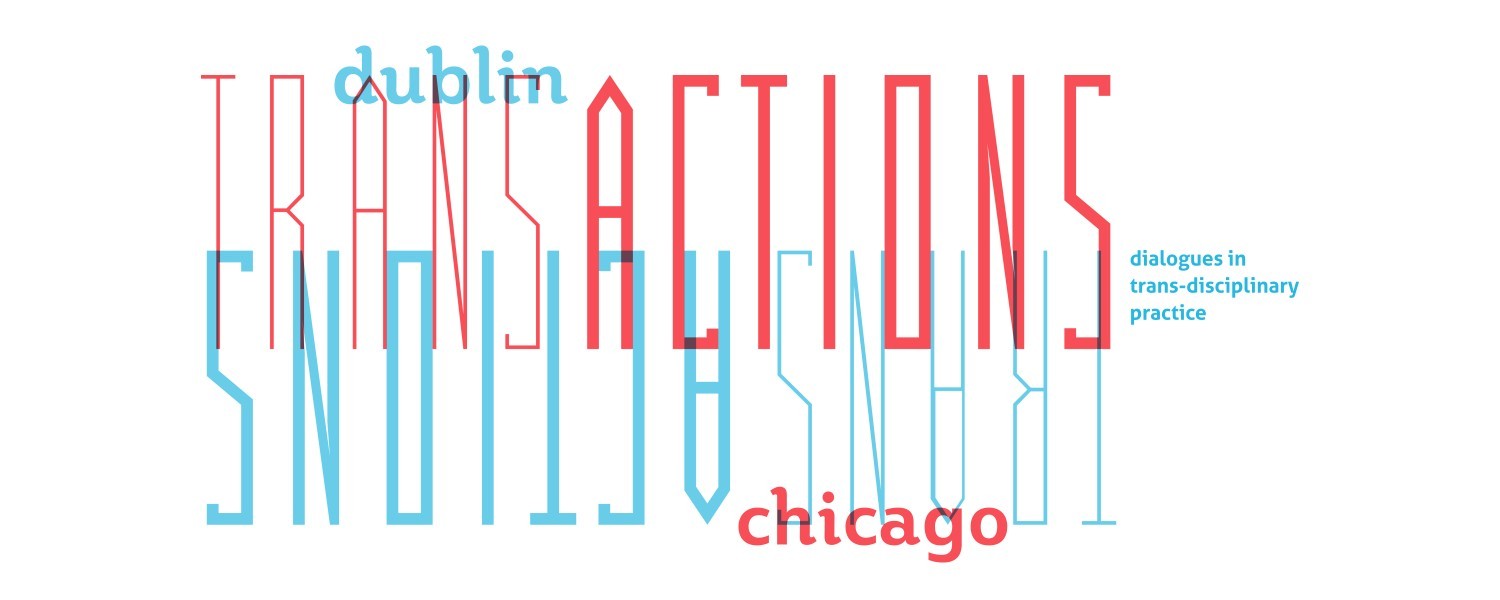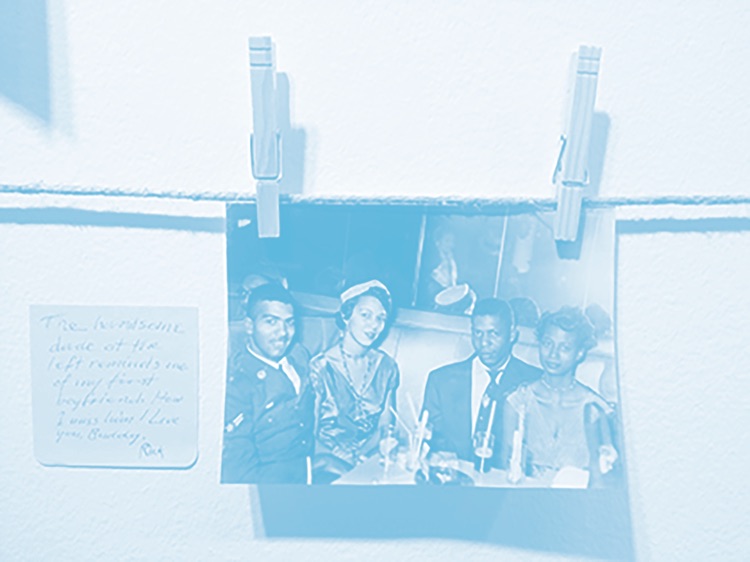Amy M. Mooney, Ph.D. | Amy M. Mooney is an Associate Professor of Art History and Visual Culture at Columbia College, Chicago.
The Federal Government in suddenly becoming the greatest patron in the world has contributed incalculably to the rise of American Art….Not only has the project itself expanded in many useful social directions, knitting itself more and more into the life of Chicago, but under it, individual talents have developed and grown into maturity. Given a chance to work for you, the Chicago artist has emerged from his isolation and is in the process of creating a typical and vital art.[1]
My quoting of Daniel Catton Rich, then-director of the Federal Art Project, is not intended to cast nostalgia for the Works Progress Administration, though a guaranteed living wage for artists would be much appreciated. Instead, I mean to use Rich’s words as a historic foil for contemporary discourse on public art, reminding us of previous aspirations and goals. The idea of art “knitting itself more and more into the life of Chicago,” seems especially pertinent to the recent bourgeoning of socially engaged art practice in this city. Though I do not subscribe to a teleological progression of artistic styles and objectives, socially engaged art has expanded the realm of public art possibilities.[2]
For some time now, artists and advocates have challenged the expectation of public art to be a permanent monument positioned on a public site. Numerous organizations have embraced the possibilities of participatory and process-based practices, seeing the positive impact on individuals and communities.[3] Some more than others lend an activist voice “knitting” the most pressing issues facing our city today into their practice. Chicago artists such as Maria Gaspar, Faheem Majeed, and Cheryl Pope are among those who work with diverse communities, addressing social inequalities, incarceration, and gun violence. To experience their art is to experience a creative collaboration with youth, community stakeholders, educators, residents and organizations that employ strategies for empowerment (fig. 1).
In neighborhoods, community centers, and even museums and galleries, the efforts of socially engaged artists point to a growing movement toward interdependence rather than separation.[4] Using formats that challenge our expectations of “art,” such as potlucks, story exchanges, or dance parties, social practice artists produce a variety of imaginative experiences, yet all work toward establishing relationships and connecting communities (fig. 2).
Social practice allows for the generation of porous, process-based projects that accommodate a dynamic and inclusive understanding of what constitutes “the public.” As such, this art form—in its myriad realizations—has the potential to support critical discourse generated by self-determined participants, thus reinstating the ever-elusive public sphere.[5] With co-curator Neysa Page-Lieberman, I recently explored the determinants, expectations and possibilities of social art practice in an exhibition titledRISK: Empathy, Art, and Social Practice.[6] With funding from the Joyce Foundation, we commissioned new work from a diverse group of Chicago artists that unfolded throughout the city over the course of four months (fig. 3). The show highlighted the interdependent role that risk and empathy play in forging social relationships. Questions around aesthetics, endurance and participation informed the generation, execution and evaluation of the work. To varying degrees, the participating artists and audiences extended themselves to others, risking the personal and the political. Partnering with both conventional art spaces such as the Museum of Contemporary Art and unconventional sites such as Sacred Youth Keepers Sustainability Garden, viewers traversed our segregated neighborhoods and engaged in a robust series of programs and projects. For many of the artists in RISK, the forms realized in the gallery served as placeholders, symbolic of their broader practice and its reflexivity to people and their environments. Like the “front porch” of Faheem Majeed’s Shack or the bench in Alberto Aguilar’sLunchroom Expanse, the exhibition was a temporary perch intended to generate discourse for anyone who wanted to participate (figs. 4 and 5). For some, it afforded the opportunity to contribute their own experiences to contemporary discussions of what constitutes happiness as seen in the performances by Kirsten Leenaars and her Edgewater neighbors or how we view our histories of migration and immigration as plotted on time-lines constructed by Samantha Hill and her contributors (figs. 6 and 7).
The conversations around the exhibition were evocative in many respects. Social practice reveals our mutual dependencies, yet the generosity, acceptance and reciprocity that such work demands is difficult to establish and even more challenging to sustain. Current evaluative determinants of “success” and “failure” fall short of explaining the value of cultural inclusion and acceptance. Importantly, social practice challenges the negative connotations of the “culture of dependency” and calls out for a reconsideration of one’s relationship with self, society and site.
Given the substantive and contested history of public art in Chicago as well as the continuing development of the Chicago Cultural Plan, there is no doubt that we need to speak loudly and passionately about the ways that art can foment social change. With such a pronouncement, I am aligning myself with a set of expectations that can be simultaneously liberating and constraining.[7] When we look to the arts to engage social issues, we have the opportunity to consider what matters most to us, questioning what merits our attention and limited resources. As an advocate of this art form and looking forward to the upcoming University of Chicago symposium on Art and Public Life, I would like to gather a loose skein of working guidelines for social practitioners:
- Learn about the history and social value of the place you seek to engage and about the people who inhabit and have inhabited those spaces.
- Consider the urban infrastructure of our spaces—artists and their collaborators must give thought to use patterns, zoning and transit. Our behaviors and social relationships are governed by them.
- Seek to create spaces, opportunities, venues and experiences that promote public agency to encourage development of participatory dialogue as well as urban development that can guide social and political outcomes.
- Strive to be inclusive and diverse, yet mindful that dissent and debate are critical to this practice. Not everyone will be pleased by the process or the results, as the nature of democracy demands discomfort at times.
- Note that the distinction between what is done for the community versus what is done with the community is significant. Too often, community members are asked to participate in such projects, but rarely consulted in the formation of objectives and structure.
Certainly this list could be expanded and edited in innumerable ways and is indebted to a rich context of influences ranging from Dolores Hayden to Pablo Helguera to bell hooks.[8] As noted in the shifting requirements for its Art in Public Places category, the National Endowment for the Arts encourages the generation of community forums at all stages of planning and realization.[9] Yet, whatever form it takes—a sphere, a square or a forum—a “public” is only relevant if its constituents are willing to take the risk of participation, seeing each other as engaged and empowered citizens. An engaged presence is the single most relevant indicator of a culture’s value of art. Perhaps paraphrasing the avocation offered by the Federal Art Project, another recommendation could be added to the publicity campaign for the Chicago Cultural Plan—how about “Public Art: Given a chance—can it work for you?”
Footnotes
[1] “Foreword,” Art for the Public by Chicago Artists of the Federal Art Project. (Chicago: The Art Institute of Chicago, 1938): np. William McBride Papers, Vivian G. Harsh Research Collection of Afro-American History and Literature, Chicago Public Library. For more on the educational innovations that Rich brought to the Art Institute of Chicago, see John W. Smith, “The Nervous Profession: Daniel Catton Rich and the Art Institute of Chicago, 1927-1958,”Art Institute of Chicago Museum Studies, 19: 1 (1993): 58-79, 105-107.
[2] For example, consider the Museum of Contemporary Art’s recent exploration of the museum’s role in supporting social practice, seehttp://www2.mcachicago.org/event/mca-talk-out-there-contemporary-practice-art-and-civility/
[3] See, for example, the interactive community-based art projects in Michael Brenson, Eva M. Olson and Mary Jane Jacob, eds., Culture in Action (Seattle, WA: Bay Press, 1995) and more recently, Nato Thompson, Living As Form(Cambridge, MA: MIT Press 2012). The impact of participatory efforts was recently outlined in a roundtable discussion at University of Chicago’s 2011 Future of the City: The Arts Symposium. In particular see “Art Influences Lives: Why Participation Matters” at https://www.youtube.com/watch?v=UhavG1GqB5A&feature=player_embedded
[4] A more expansive discourse on the role of participation should take into consideration the perspectives offered in Markus Miessen, The Nightmare of Participation (Crossbench Praxis as a Mode of Criticality) (Berlin: Sternberg Press, 2011); Gregory Sholette & Oliver Ressler, eds. It’s the Political Economy Stupid! (London: Pluto Press, 2013) and Claire Bishop, Artificial Hells: Participatory Art and the Politics of Spectatorship (New York, Verso Press, 2012).
[5] By no means do I mean to suggest that every social practice supports critical debate, as posited by Jürgen Habermas, yet the expectation of participation makes such realization far more feasible than with other “stand and view” art forms. Jürgen Habermas, The Structural Transformation of the Public Sphere: An Inquiry into a Category of Bourgeois Society (Cambridge, MA: MIT Press, 1991).
[6] Many thanks to Neysa for allowing me to borrow from our co-authored catalog essay, “The Quandary of Social Practice: Why Empathy? Why Risk?” The list of artists, examples of their work, and exhibition catalog may be accessed at: http://students.colum.edu/deps/glass-curtain-gallery/exhibitions/risk-empathy-art-and-social-practice/index.php
[7] Andrea Phillips and Fulya Erdemci, eds., Social Housing—Housing the Social: Art, Property and Spatial Justice (Berlin: Sternberg Press, 2012).
[8] In addition to Dolores Hayden, The Power of Place: Urban Landscapes as Public History (Cambridge, MA: MIT Press, 1999); Pablo Helguera, Education for Socially Engaged Art: A Materials and Techniques Handbook (New York: Jorge Pinto Books, 2011) and bell hooks, Teaching to Transgress: Education as the Practice of Freedom (New York: Routledge, 1994), I must also cite Shannon Jackson, Social Works: Performing Art, Supporting Publics (New York: Routledge, 2011).
[9] For a historic overview of the shifts in NEA expectations, see Suzanne Lacy, Mapping the Terrain: New Genre Public Art (Seattle, WA: Bay Press, 1994), pp. 22-24. Current NEA guidelines include: “Creative methods for engaging audiences or increasing access to the arts.” See more at:http://arts.gov/news/2014/national-endowment-arts-announces-guidelines-available-fiscal-year-2015-funding-programs#sthash.FlKdFC7z.dpuf

